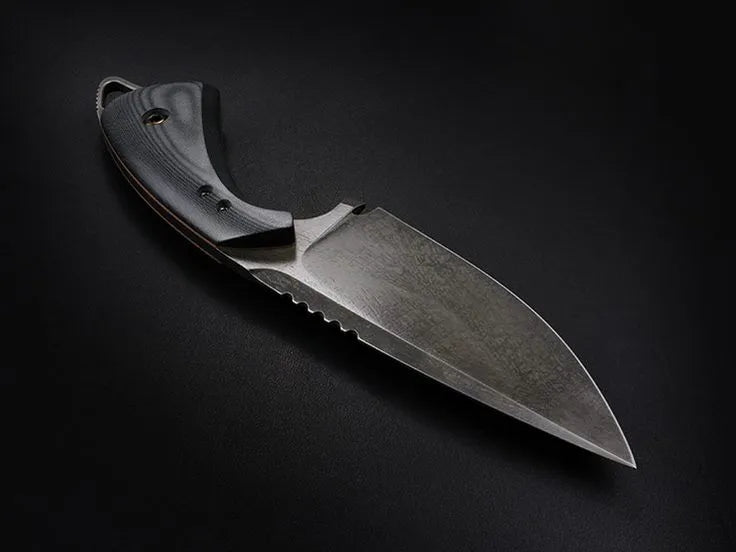
How Do You Get Nicks Out of a Kitchen Knife?
Follow these procedures to prolong the lifespan of your knife and restore its functionality. Regular upkeep and careful use are essential to preventing potential damage and ensuring that your kitchen knives continue to be reliable instruments in your culinary pursuits. If you're wondering, "how do you get knicks out of a kitchen knife," regular maintenance and proper sharpening techniques can help restore the blade's edge effectively.
A clean kitchen knife is necessary for effective and secure food preparation. Even high-quality knives can get chips and nicks along the edge over time. These reduce their functionality and raise the possibility of mishaps. Therefore, you should know how do you get knicks out of a kitchen knife.
Restoring your knife's functioning requires taking quick care of these flaws. Knives Hives explains how do you get knicks out of a kitchen knife in the best possible way.
Find Nicks in Your Kitchen Knife
Start by closely examining the blade for chips or nicks of your kitchen knife set. To find abnormalities, carefully run your finger over the edge in a well-lit place, being careful not to be hurt. Determining the precise position and dimensions of the nicks can help you choose the best healing strategy.
Evaluate the Damage's Severity
The size of the nicks determines the mending technique:
Minor Nicks
Common sharpening methods may frequently fix minor flaws.
Major Nicks
More extensive reshaping of the blade edge may be necessary for larger chips.
Choose the Right Sharpening Tools
Use the right sharpening equipment to get rid of nicks:
Whetstone
A dual-sided whetstone with coarse and fine grits is perfect for this purpose.
Lubricant
Lubricate the whetstone with water or oil to minimize friction and prevent the accumulation of metal particles.
How Do You Get Nicks Out of a Kitchen Knife?
The best knife sharpening method to remove knife nicks is:
Prepare the Whetstone
As the manufacturer directs, prepare the whetstone by soaking it in water for ten to fifteen minutes or by lightly covering it with honing oil.
Pick the Right Angle
Hold the knife between 15 and 20 degrees from the whetstone. Effective sharpening requires maintaining a constant angle.
Procedure for Knife Sharpening
Coarse Grit Side
Start with the coarse side to remove the material surrounding the nicks. Strike the blade across the entire edge of the stone with moderate pressure, covering the whole edge. Continue doing this until you can no longer see the nicks.
Fine Grit Side
Go to the fine side to sharpen the edge. Use less pressure and keep spreading if you want a smooth, crisp finish.
Alternate Sides
Throughout the procedure, ensure that both sides of the blade are sharpened equally.
Frequent Lubrication
Keep the whetstone well lubricated throughout to promote easy sharpening and guard against damage.
Buy the best chef knife set now!
Finishing Details
Honing
After it has been sharpened, align the blade edge with an honing rod to improve performance and sharpness.
Cleaning
To remove any metal residue or particles, thoroughly clean the knife.
Testing Sharpness
Slice through a tomato or a piece of paper to carefully examine the blade's sharpness. The knife should not rip when it cuts.
Ways to Prevent Nicks in the Future
Appropriate Use
Avoid activities that might harm the blade, such as chopping frozen food or bones, and only use the knife for its designated function.
Appropriate Cutting Surfaces
Cutting boards made of wood or plastic are the best options since harder surfaces, such as stone or glass, might be nick.
Frequent Maintenance
Regularly sharpening and honing your knife's edge will keep it in top shape.
The Bottom Line
Now you know how do you get nicks out of a kitchen knife!
Follow these procedures to prolong the lifespan of your knife and restore its functionality. Regular upkeep and careful use are essential to preventing potential damage and ensuring that your kitchen knives continue to be reliable instruments in your culinary pursuits.








